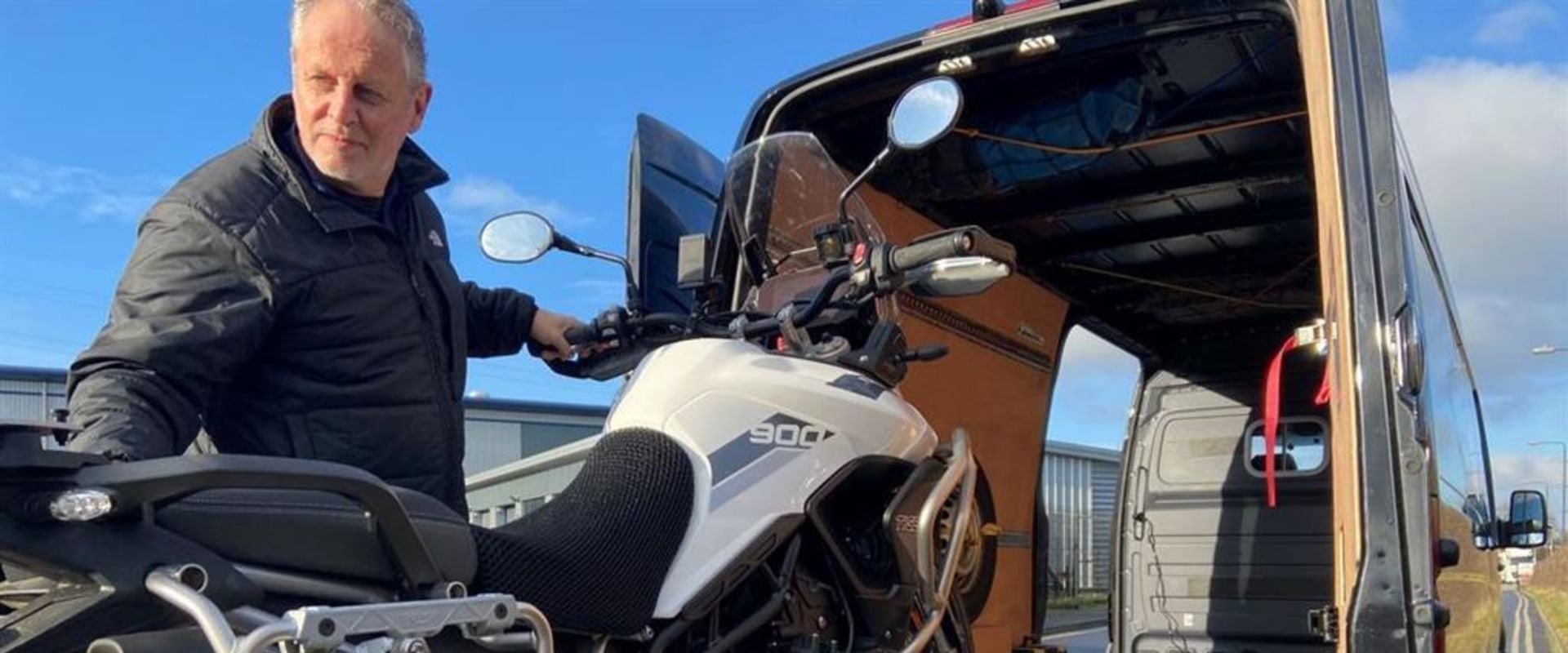Are you a motorcycle enthusiast looking to transport your prized possession with a sidecar or trailer? Look no further! Our comprehensive guide covers everything you need to know about transporting motorcycles with sidecars or trailers. Transporting motorcycles with added attachments can be a daunting task, but with the right knowledge and resources, it can be a smooth and stress-free process. From finding the best transportation services to understanding the regulations and safety precautions, we've got you covered. Whether you're moving to a new location, attending a motorcycle event, or simply want to transport your bike for maintenance, our article will provide you with all the necessary information to make the right decisions and ensure a successful transport. Join us as we delve into the world of motorcycle transport services and specialty transport services. Get ready to learn about the various options available, important considerations to keep in mind, and expert tips to ensure a seamless experience.
Let's get started!First and foremost, it's crucial to ensure that your sidecar or trailer is safely attached to your motorcycle. Make sure all bolts and connections are secure and that the weight is evenly distributed. You may also need to adjust your tire pressure to accommodate the added weight. Next, consider the type of transportation you'll be using.
Will you be using a truck or trailer to tow your bike? If so, make sure the vehicle is equipped to handle the weight of both your motorcycle and the attached sidecar or trailer. When loading your motorcycle onto a trailer or truck bed, be sure to secure it properly with tie-down straps. This will prevent any movement during transportation. You may also want to invest in a wheel chock to keep your bike in place.
If you're using a truck bed, consider using a ramp for easier loading and unloading. It's also important to consider any potential height restrictions when transporting your motorcycle with a sidecar or trailer. Be aware of low bridges or tunnels that may not have enough clearance for your bike and attached equipment. Another key consideration is weather conditions.
If you're transporting your motorcycle in inclement weather, be sure to cover it with a tarp or use a waterproof cover to protect it from the elements. This will prevent any damage to your bike and keep it in top condition.
Avoiding Potential Obstacles
When transporting a motorcycle with a sidecar or trailer, it's important to be aware of potential obstacles that may affect your transportation plans. These obstacles can include height restrictions or inclement weather. For motorcycles with sidecars or trailers, height restrictions can be a major concern.It's important to plan your route ahead of time and check for any low clearance areas. This is especially important if you're planning a long-distance trip. In addition to height restrictions, inclement weather can also pose a challenge when transporting your motorcycle. Heavy rain, strong winds, or even snow can make it difficult to safely transport your bike.
It's important to keep an eye on the weather forecast and plan accordingly. If necessary, consider rescheduling your transportation plans to avoid any potential hazards. By being aware of potential obstacles and planning ahead, you can ensure a smooth and safe transportation experience for your motorcycle with a sidecar or trailer. Don't let these potential obstacles get in the way of enjoying your ride – take the necessary precautions and enjoy a stress-free trip.
Choosing the Right Transportation Method
When it comes to transporting motorcycles with sidecars or trailers, choosing the right transportation method is crucial for the safety of your bike and attached equipment. First and foremost, consider the weight and size of your motorcycle and its attachments.Make sure to choose a vehicle that can safely handle the weight and size of your bike, as well as any added weight from the sidecar or trailer. This will ensure that your bike is secure during transportation and prevent any potential damage. Next, think about the distance of your trip and the terrain you will be traveling on. If you're planning a long-distance trip, a truck or trailer may be the best option for transporting your motorcycle with a sidecar or trailer. However, if you're only moving your bike a short distance, a pickup truck or van may suffice. It's also important to consider the weather conditions during transportation.
If you're traveling through rain or snow, make sure to choose a vehicle that can handle these conditions safely. Lastly, consider the method of transportation itself. Will you be using straps or tie-downs to secure your bike? Will you need to use a ramp to load and unload your motorcycle? These are all important factors to consider when choosing the right transportation method for your motorcycle with sidecars or trailers.
Securing Your Motorcycle for Transport
When it comes to transporting a motorcycle with a sidecar or trailer, proper securing is crucial for a safe and smooth ride. The last thing you want is for your bike to become loose or damaged during transport. That's why it's important to follow these steps to ensure your motorcycle is securely fastened in place.1.Use Quality Tie-Down Straps
The first step in securing your motorcycle is to use high-quality tie-down straps.These straps should be made specifically for motorcycles and have a strong weight capacity. Avoid using ropes or bungee cords, as they may not be strong enough to hold your bike in place.
2.Find Secure Anchor Points
Before attaching the tie-down straps, make sure you have secure anchor points on your motorcycle and the transport vehicle. These anchor points should be strong and capable of handling the weight of your bike. Avoid attaching straps to plastic or non-sturdy parts of your motorcycle.3.Use a Wheel Chock
A wheel chock is a device that helps keep the front wheel of your motorcycle in place during transport.This can prevent your bike from tipping over or moving around too much. Make sure the wheel chock is securely attached to the transport vehicle before loading your bike.
4.Secure the Bike in an Upright Position
When loading your motorcycle onto the transport vehicle, make sure it is secured in an upright position. This will help distribute the weight evenly and prevent any damage during transport.5.Strap Down the Front and Rear of the Bike
Using the tie-down straps, secure the front and rear of your motorcycle to the anchor points on the transport vehicle. Make sure the straps are tight and there is no slack, but be careful not to over-tighten and damage your bike.6.Double Check Before Hitting the Road
Before hitting the road, double check that your motorcycle is securely strapped in place.Give the bike a gentle push to make sure it doesn't move, and check that all straps are tight and in good condition. By following these steps, you can ensure that your motorcycle with a sidecar or trailer is safely secured for transport. Don't take any chances when it comes to transporting your beloved bike - proper securing is key for a worry-free ride. Transporting a motorcycle with a sidecar or trailer may seem daunting, but with the right knowledge and precautions, it can be done safely and efficiently. By following these tips, you can ensure that your bike arrives at its destination unscathed and ready for the road ahead.



